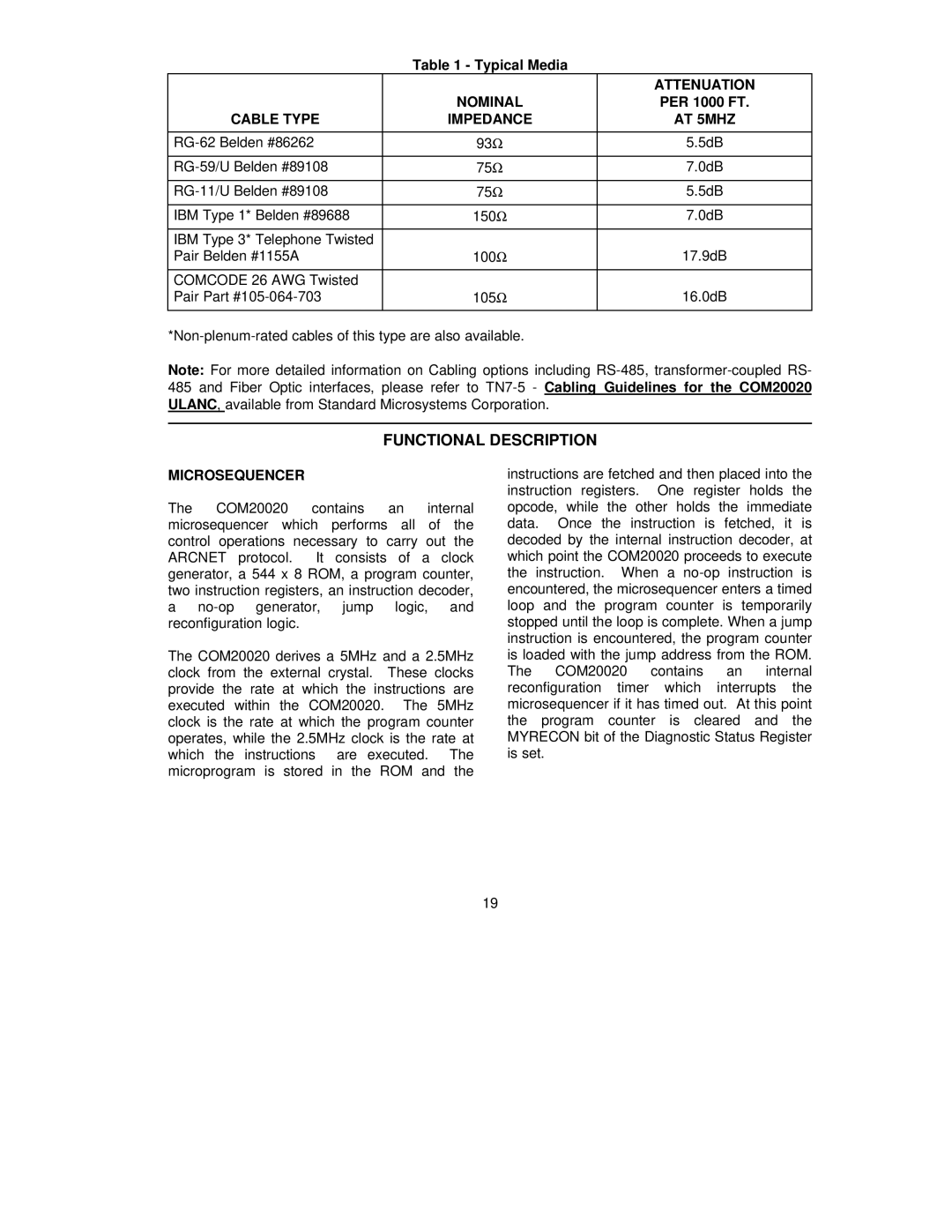Table 1 - Typical Media
|
| ATTENUATION |
| NOMINAL | PER 1000 FT. |
CABLE TYPE | IMPEDANCE | AT 5MHZ |
|
|
|
93Ω | 5.5dB | |
|
|
|
75Ω | 7.0dB | |
|
|
|
75Ω | 5.5dB | |
|
|
|
IBM Type 1* Belden #89688 | 150Ω | 7.0dB |
|
|
|
IBM Type 3* Telephone Twisted |
|
|
Pair Belden #1155A | 100Ω | 17.9dB |
|
|
|
COMCODE 26 AWG Twisted |
|
|
Pair Part | 105Ω | 16.0dB |
|
|
|
Note: For more detailed information on Cabling options including
FUNCTIONAL DESCRIPTION
MICROSEQUENCER
The COM20020 contains an internal microsequencer which performs all of the control operations necessary to carry out the ARCNET protocol. It consists of a clock generator, a 544 x 8 ROM, a program counter, two instruction registers, an instruction decoder, a
The COM20020 derives a 5MHz and a 2.5MHz clock from the external crystal. These clocks provide the rate at which the instructions are executed within the COM20020. The 5MHz clock is the rate at which the program counter operates, while the 2.5MHz clock is the rate at which the instructions are executed. The microprogram is stored in the ROM and the
instructions are fetched and then placed into the instruction registers. One register holds the opcode, while the other holds the immediate data. Once the instruction is fetched, it is decoded by the internal instruction decoder, at which point the COM20020 proceeds to execute the instruction. When a
19
